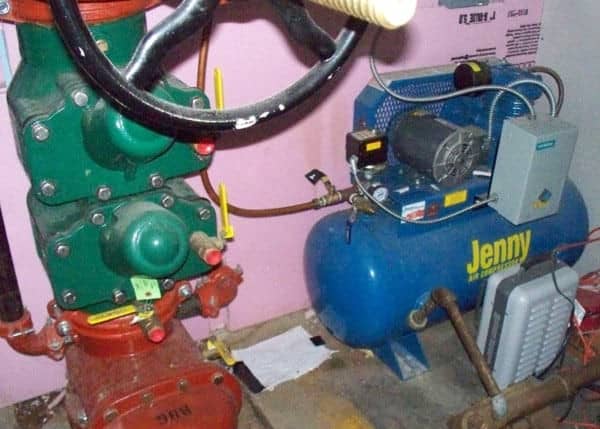Understanding and properly inspecting air compressors and automatic detection equipment can prolong the life of the system and maintain code compliance
In this installment of QRFS’ series on the inspection of commercial automatic fire sprinkler systems, we detail the National Fire Protection Association (NFPA) rules governing why and when to inspect air compressors for sprinkler systems as well as automatic fire detection equipment, including NFPA 25 and NFPA 13 requirements.
Searching for fire sprinkler system parts? Head to our large inventory of fire sprinkler heads, cover plates, escutcheons, or butterfly valve and trim valves. Or just use the search bar at the top of the page.
Automatic detection equipment plays an essential role in preaction and deluge fire sprinkler systems
Preaction systems, deluge systems, and pilot lines have clear definitions in NFPA 13 and 25
Automatic detection equipment in the specific context of sprinkler systems typically consists of heat or smoke detectors connected to a pre-action or deluge fire sprinkler system. Other automatic detectors will of course be present in a wider life safety system, and their inspection and installation requirements are covered in NFPA 25: Standard for the Inspection, Testing, and Maintenance of Water-Based Fire Protection Systems and NFPA 72: National Fire Alarm and Signaling Code.
Before reading further, readers may want to brush up on pre-action and deluge systems by taking a look at the major fire sprinkler system types. Here’s how the NFPA defines these systems—and a key component in each system.
From the 2016 Edition of NFPA 13 and 2017 Edition of NFPA 25 (Chapter 3)
Preaction Sprinkler System. A sprinkler system employing automatic sprinklers that are attached to a piping system that contains air that might or might not be under pressure, with a supplemental detection system installed in the same areas as the sprinklers.
Deluge Sprinkler System. A sprinkler system employing open sprinklers or nozzles that are attached to a piping system connected to a water supply. This supply is accessed via a valve that is opened by the operation of a detection system installed in the same areas as the sprinklers or the nozzles. When this valve opens, water flows into the piping system and discharges from all sprinklers or nozzles.
Pilot Line Detector. A standard spray sprinkler or thermostatic fixed-temperature-release device used as a detector to pneumatically or hydraulically release the main valve, controlling the flow of water into a fire protection system.
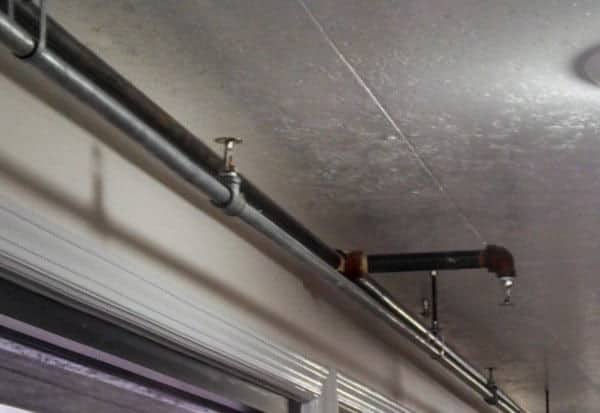
Thermal detectors are the most frequently-used releasing devices in preaction and deluge systems
Pre-action and deluge fire sprinkler systems only send water when an electric, hydraulic, or pneumatic releasing device (or detection equipment) activates—either from fire, smoke, or the use of a manual pull station. An electric automatic detection system consists of fire, heat, or smoke detectors.
Pilot lines activate these hydraulic or pneumatic detection system. This equipment may look just like a redundant sprinkler system. And while these pipes run parallel with sprinkler branch piping, a pilot system uses smaller and galvanized piping with sprinklers or other thermal-responsive mechanical devices.
Regardless of the method, the activation of a fire, heat, or smoke detector or pilot line detector initiates the action to fill the fire sprinkler system with water.
Thermal-style detectors are the most common and oldest type of automatic detection devices:
- Most units are fixed-temperature devices. These operate when the room reaches a predetermined temperature. A fixed-temperature, line-type detector consists of two cables and an insulated sheathing that breaks down when exposed to heat. The advantage of line-type detection—over the sensors described below—is that thermal sensing density can be increased at a lower cost.
- The second-most-common type of thermal sensor is the rate-of-rise detector. This device identifies an abnormally fast temperature climb over a short time period. Units like these are “spot type” detectors, which means that they are periodically spaced along a ceiling or high on a wall.
The below video explains how a fixed-temperature heat detector works, as well as how it’s wired to a fire alarm control panel:
Depending on the equipment used, inspection requirements may be found in NFPA 25, NFPA 72, or both
NFPA 25 details the inspection requirements for automatic detection equipment. These inspections focus on visual indicators of damage or dysfunction.
From the 2017 Edition of NFPA 25
13.9.1 Automatic detection equipment used to actuate water-based fire protection systems shall be inspected, tested, and maintained in accordance with NFPA 72.
13.9.2 Automatic detection equipment used to actuate water-based fire protection systems that is not covered by NFPA 72 shall be inspected, tested, and maintained to ensure that the detectors are in place, securely fastened, and protected from corrosion, weather, and mechanical damage and to ensure that the communication wiring, control panels, or pneumatic tubing system is functional.
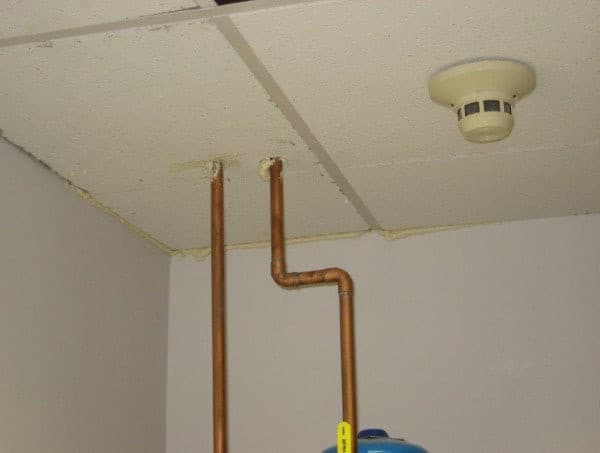
Note that these sections apply to two different types of equipment. The first section (13.9.1) sends the user to NFPA 72, which covers automatic electric or electronic devices, such as heat and smoke detectors. The second section (13.9.2) applies to other automatic detection equipment, like pilot line detectors.
NFPA 72 requires basic visual inspections of electronic equipment on a semiannual basis
Inspectors must check electronic detectors, releasing devices, and other actuating equipment for damage or impairments. The timelines, however, may be adjusted depending on the preferences of the authority having jurisdiction (AHJ) or to account for electrical hazards.
From the 2016 Edition of NFPA 72
14.2.1.3* The purpose for periodic inspections is to assure that obvious damages or changes that might affect the system operability are visually identified.
14.3.1* Unless otherwise permitted by 14.3.2, visual inspections shall be performed in accordance with the schedules in Table 14.3.1 or more often if required by the authority having jurisdiction.
14.3.2 Devices or equipment that is inaccessible for safety considerations (e.g., continuous process operations, energized electrical equipment, radiation, and excessive height) shall be permitted to be inspected during scheduled shutdowns if approved by the authority having jurisdiction.
Where facilities have the duty and responsibility to do inspections through NFPA 25, guidelines in NFPA 72 play an essential role. A visual inspection is made by observing the automatic detection equipment condition on a semi-annual frequency.
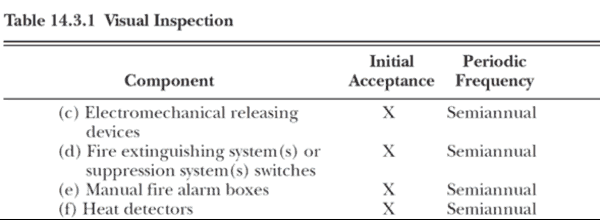
Look for paint on equipment, missing components or devices, physical damage, and excessive dirt and dust (also known as “loading”). Note that mild-to-moderate loading can be safely removed from some automatic detection devices using compressed air.
Inspect air compressors monthly to keep dry-pipe systems operational
NFPA 25 inspections focus on five key sources of compressor failure
Air compressors can play a big part in fire protection systems, especially when it comes to dry pipe fire sprinkler systems. Dry pipe systems are installed in freezing environments. The air compressor pressurizes the sprinkler piping network, keeping water out until a fire occurs. These compressors are located near the dry pipe valve, and connect to it with an air maintenance device.
From the 2017 Edition of NFPA 25
13.10.2.1 Air compressors dedicated to water-based fire protection systems shall be inspected monthly to verify the following:
(1) Air compressor is free of physical damage.
(2) Power wiring to the air compressor is intact and free of physical damage.
(3) Piping from the air compressor to the fire protection system is intact and free of physical damage.
(4) The means of anchoring the air compressor to the structure or to the system piping is secure, tight, and free of physical damage.
(5) Air compressors requiring oil have the required amount of oil in the oil reservoir.
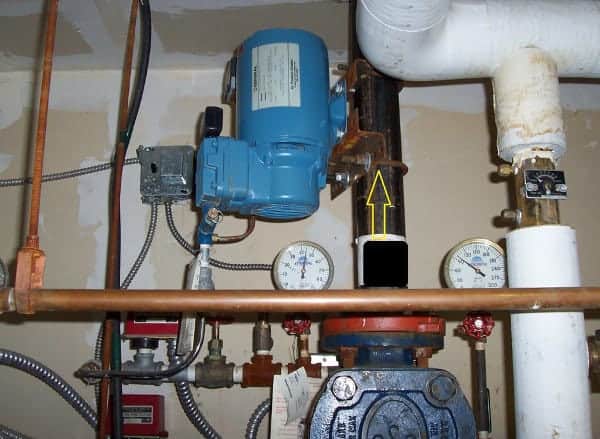
Pairing NFPA requirements with manufacturers’ guidelines on compressor maintenance can greatly extend the service life of dry-pipe systems
As with all fire protection equipment, any type of physical damage could compromise the integrity and operation of an air compressor for sprinkler systems. Therefore, NFPA 25’s air compressor requirements include monthly inspections, which are notorious for vibrating connections loose during continuous operation. Inspectors must check for the following:
- Verify the mounting brackets or anchoring provisions remain secure.
- Ensure wiring is intact, undamaged, and safe.
- Check that the air supply from the air compressor to the air maintenance device remains undamaged.
Also, verify that the air compressor is free of damage from any impact as well as corrosion. Oil-lubricated motors are becoming a thing of the past for new installations and construction, but plenty of existing air compressors with fillable lubrication remain.
The inspection requirements from NFPA 25 do not cover all of the air compressor for sprinklers inspection duties. According to NFSA ITM Specialist Vince Powers, “It is important to follow the air compressor manufacturer requirements also. While facility managers are doing the monthly inspection, one of most missed items on minor air compressor maintenance is draining the condensation in the air tank. Allowing the condensation to build can impact air compressor operation, decrease service life, increase tank corrosion which increases the potential of scale and debris to foul the air maintenance device and operation of the dry pipe valve.”
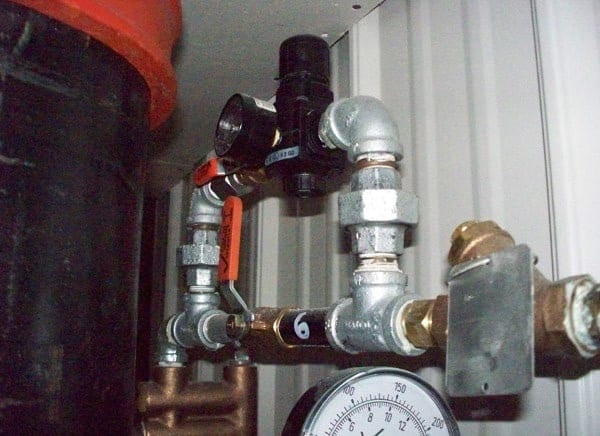
Keep preaction, deluge, and dry-pipe systems safe and up to code with knowledge and products from QRFS
This concludes our series on the NFPA inspection requirements for automatic detection equipment and air compressors. Be sure to check out our previous blogs, including:
- The annual visual inspection of sprinkler heads (Part 1)
- The annual visual inspection of pipe and fittings (Part 2)
- Inspection requirements for fire pumps (Part 3)
- The inspection of signs, gauges, and alarms (Part 4)
- Inspecting fire sprinkler system valves (Part 5)
- The inspection of water storage tanks (Part 6)
If you need to buy parts for your commercial fire sprinkler system, check out QRFS’ selection of commercial fire sprinkler heads, cover plates, escutcheons, and other components and tools, or just use the search bar at the top of the page to find what you’re looking for.
Questions? Call us at +1 (888) 361-6662 or email support@qrfs.com.
This blog was originally posted at blog.qrfs.com. If this article helped you, check us out at Facebook.com/QuickResponseFireSupply or on Twitter @QuickResponseFS.


